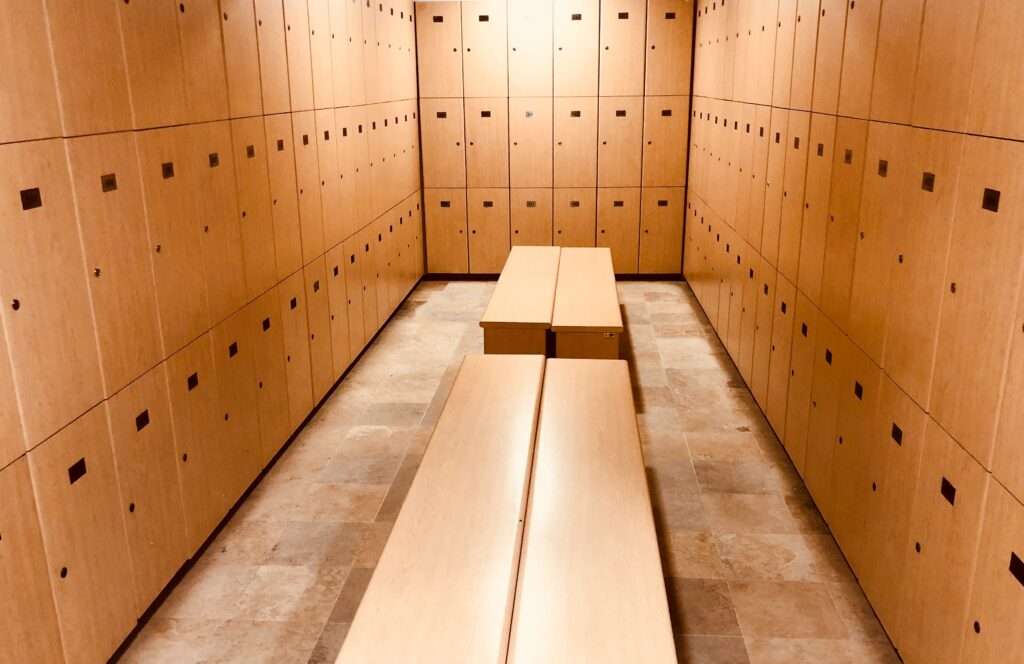
Gym-going devotees can agree that no number of resistance bands, free weights, or bench press alternatives compare to the real thing. Maybe it's the crash of a bar or the hiss of an air bike, but working out in your living room can't replace the happiness of working out in a facility that feels like a home away from home.
Which might make it all the more tempting that gyms across the country are starting to reopen after shutting down for a few months to help limit the spread of COVID-19. But you don't want to fall back into your regular gym routine too soon.
Is it safe to go to the gym?
It's still unclear how safe it really is to return to your favorite gym. Whether or not you should return to your gym workouts depends on multiple factors, including your age and overall health.
The adults of 65 years or more may be at higher risk of contracting COVID-19. Similarly, people with underlying health conditions, such as asthma, diabetes, or heart disease, or people receiving cancer treatment or treatment with another drug that weakens the immune system, may also be at higher risk. If you fall into any of these categories, you may not want to be the first to return to the gym as soon as it opens.
Keep in mind that the gym is not going to be exactly how you remember it. To reopen, many gyms are instituting new security protocols. Some are introducing a fingerprint-free entry process to minimize contact between workers and gym-goers. Some are even considering implementing mandatory temperature checks for staff and will use gel disinfectants throughout the facility.
The Government also requires that gyms reopen at a reduced capacity, which limits the number of members entering. Some chains allow reservation-only training to limit clientele. Others are only open every two hours to clean and disinfect fitness areas.
Although pre-pandemic sports trends are likely to have changed, for example, it may already there is no rush hour before work in the locker room with so many people working from home. Plus, you can still make an effort to schedule your workout at a time when there are fewer people around to help keep your risk of exposure even lower.
The ideal is to go to the gym early in the morning, if you're going, so you can train alongside an even smaller number of people and use the equipment before others touch it after the nightly clean.
Deciding if it's safe to return to the gym is tricky, as many of the above factors are out of your control. The prevention practices maintained by the gym and other clients affect your health and, as of now, there is no guarantee that your gym is 100 percent safe.
Go to the gym safely
The gym is probably one of the germiest places you used to visit. After all, the whole experience is based on touching many different community materials.
Almost by definition, a gym is littered with objects and surfaces that may have been contaminated by other humans. Repeated contact with training machines, weights, etc., can transfer an invisible layer of bacteria, viruses and even parasites to our own skin and clothes.
If you're not determined to stay home, there are some practices you should follow to stay as safe as possible. Even in the gym, experts recommend wear a mask and keep a distance of at least 2 meters between yourself and others at all times. And at this point, it should be apparent: wash your hands properly, both before and after exercise, and stay home if you are sick.

Use of machines and free weights
You will come into contact with weights or machines while exercising; After all, that's the point of going back to the gym. Most likely, other customers have played and will play the same equipment. To protect yourself and others, Clean the equipment you touch before and after using it.
To fully clean your computer to prevent any kind of illness or bacteria, according to experts, you'll want to use a solution that is both a cleaner (removes dirt) and a disinfectant (kills germs).
Check with gym staff that their facility has approved cleaning solutions that can help minimize the spread of COVID-19, such as a bleach or all-purpose cleaner. Thoroughly clean the machines, focusing especially on areas that come into frequent contact with bare skin, such as seats, bars, and discs.
If you're determined to get back to the gym as soon as the doors open, there's a right way to get in through new normal fitness. As you begin your workout, it may feel natural to go back to your usual flow. But do your best to stay alert and cautious.
Keep at least 2 meters away from other clients at all times, even if you're just grabbing a weight quickly. If cardiovascular exercises are in your training routine, choose a treadmill or elliptical machine that is as isolated as possible. In the free weight section, set up a small area of personal space or move your bench 2 meters away from others.
If your favorite machine is busy, avoid alternate series with another person. As we told you earlier, you'll want to sanitize equipment before and after using it, and serial sharing makes it more difficult to follow this protocol.
Training in group classes
Fans of fitness classes will be disappointed to learn that it's safer to avoid group sessions for now. Group sessions make it difficult to comply with distancing rules. Also, high intensity can make wearing a mask more onerous.
About 112 cases of COVID-19 have been associated with group dance classes in South Korea, according to a May 2020 study in emerging infectious diseases. The researchers found that the classes of high-intensity exercises in small, confined spaces create the optimal environment for the spread of disease. The warm temperature of a studio, combined with large class sizes and some unavoidable sweat and humidity in the air make transmission more difficult to avoid.
Small, closed and poorly ventilated areas of the gym should be avoided, even if no other people are present. There is evidence that particles ejected by a person in such areas continue to 'linger' in the air for several minutes after they are gone.
Group classes may also include mats, bands, boxing gloves, or other community equipment. If possible, avoid these materials altogether. If necessary, bring your own mat or skipping rope to your gym.

Can the changing room be used?
No matter how much you miss your gym sauna, this is not the time to rekindle that relationship. In general, avoid the locker room and bathrooms as much as possible. These are usually small, damp spaces that make it difficult to keep a safe distance from other people.
Although it seems contradictory, avoid showering at the gym and take a shower as soon as you get home.
It's probably a good idea wash clothes as soon as possible. Experts suggest avoiding shaking your sweaty gear to minimize the chance of dispersing the virus into the air.
How long should you wait before returning?
After a few months of shelter-at-home, it's not surprising that you're anxious to get back into your exercise routine. But to play it safe, it's recommended to wait until researchers become familiar with the locations and causes of coronavirus hot spots. Although it can be frustrating not knowing the exact time it will be safe to return to the gym, being patient will help keep you safe and reduce the spread.
Therefore, train carefully and exercise at home for now. Just because the gym has reopened doesn't mean you have to head back right away. Explore some virtual classes that your local gym or studio may be offering, and limit trips to any real gym as much as possible.